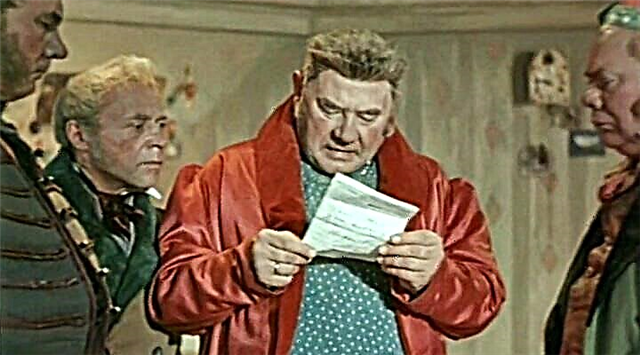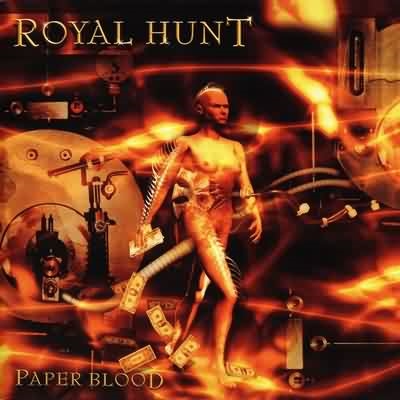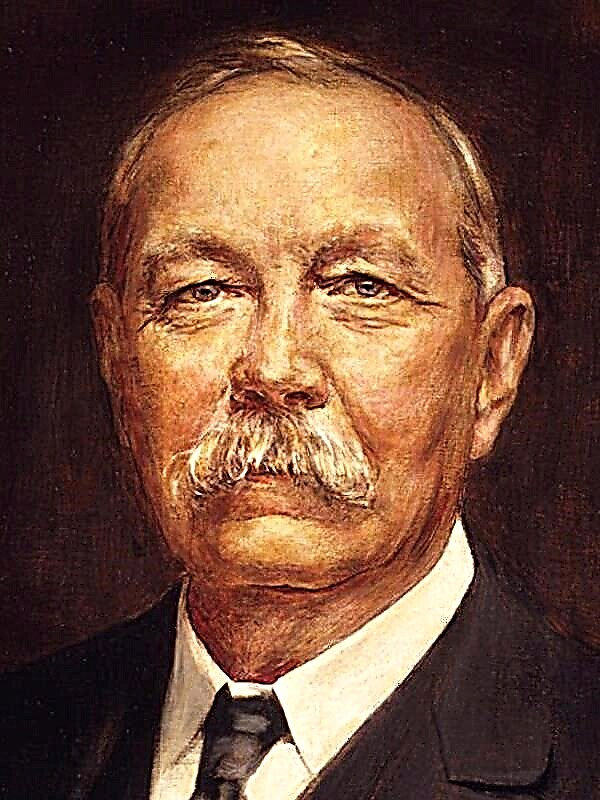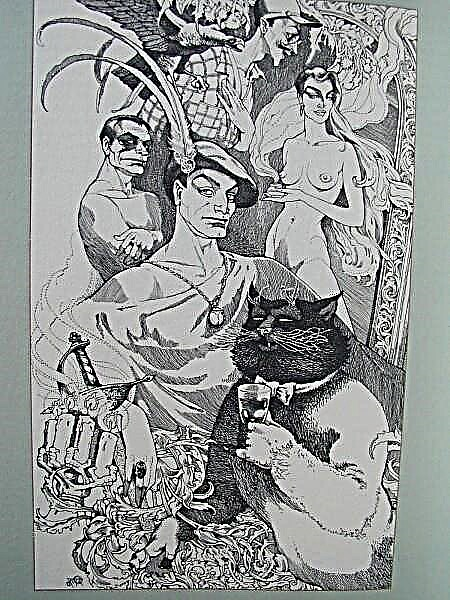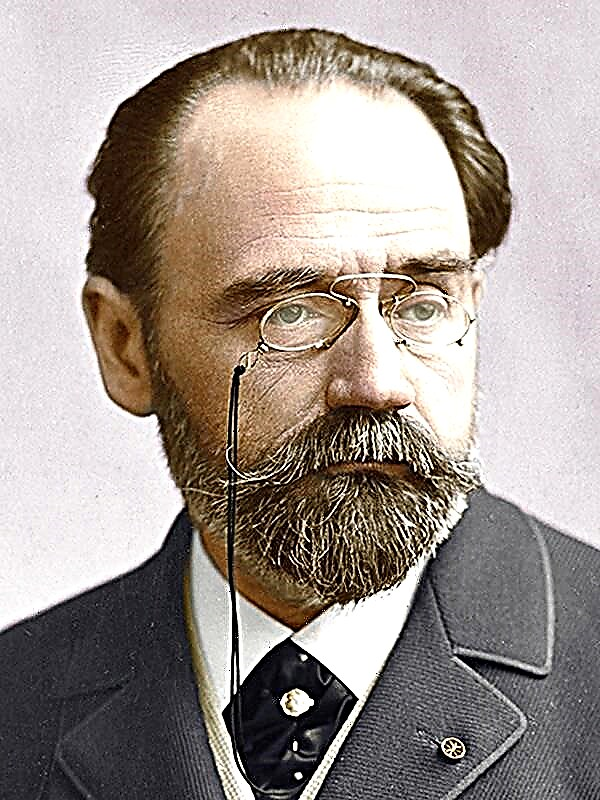Mrs. Elspeth McGillicadi, a middle-aged woman, tired of Christmas shopping in London, takes the train at Paddington Station, flips through a magazine and falls asleep. Half an hour later she wakes up. It’s dark outside. The oncoming train rumbles with a roar. Then, for some time, on the next rails in the same direction as the train in which Mrs. McGillicadi rides, another one moves. Mrs. McGillicadi sees a curtain rise sharply in one of the windows of a parallel train. In a brightly lit compartment, a man (he is visible to her from the back) is strangling a woman. Mrs. McGillicadi saw the woman: this is a blonde in a fur coat. As if mesmerized, an elderly lady watches the scene of the murder in all terrible details. A nearby train speeds up and disappears in the dark. Mrs. McGillicadi talks about what she saw the train controller, then writes a short letter to the head of the station and asks the porter to transfer the letter, adding a shilling to the request. She leaves in Milchester, she is already waiting for the car that brings her to St. Mary's Mead, to visit Miss Jane Marple, her longtime friend.
After hearing the story of Mrs. McGillicadi, Miss Marple discusses in detail with her the details of what she saw and decides to tell the local police sergeant Frank Cornish about the incident. The sergeant, who had the opportunity to verify the intelligence and insight of Miss Marple, does not doubt the veracity of the story of two elderly ladies. Miss Marple suggests that the culprit could either leave the corpse in the car and run, or throw it out of the train window. But in the newspapers there is no mention of the corpse on the train, and the answer to Sergeant Cornish’s request is no. Miss Marple repeats her friend’s route and makes sure that on one stretch of the track where the train slows down before turning, the railroad tracks are laid along a rather high embankment. She believes that the corpse could be pushed from the train right here. Miss Marple checks maps and an address book. She has an investigation plan, but she feels too old for such a job. Then Miss Marple turns to Lucy Islesbarrow for help.
Lucy Aylesbarrow is a young woman with a sharp mind and a variety of abilities, in particular, the ability to cope with any household problems unusually easily and quickly. This skill made Lucy very popular, and it was thanks to him that Miss Marple met her - once Lucy was invited to housekeeping with Miss Marple, who came to herself after the illness. Now, Lucy takes on a rather strange assignment of an elderly lady: she will have to engage in housework in Rutherfordhill, the Krekentorp mansion, located near the railway, right at the site of the alleged murder; in addition, Lucy has to find a corpse. Thanks to her reputation, Lucy instantly takes a job in the Krekentorp family. Soon she manages to find the corpse of a young blonde - in the so-called Long Shed, in the marble sarcophagus, which at the beginning of the century was taken out of Naples by the current owner of the house, the father of the family, Mr. Krekentorp Sr. Lucy reports her find to Miss Marple, then calls the police. To investigate the case was entrusted to Inspector Craddock (who, incidentally, knows Miss Marple very well and highly appreciates her detective abilities).
The terrible discovery gathers the whole family in a house where usually only the old father and daughter Emma live. Brothers Harold (businessman), Gedrick (artist), Alfred (whose occupation is not entirely clear, come, however, in the future it turns out that he lives due to various frauds) and Brian Eastleu, husband of the long-dead sister Edith (formerly a beautiful military pilot and now - a person who cannot find a place for himself in a changed life). None of the men in the family are indifferent to the charm, beauty and active nature of Lucy. During the work with the Krekentorpov, she receives from each of them a more or less frank offer to marry him (the old father is no exception), and the married Harold offers her his patronage. Even Alexander, the son of Brian, and his friend James Stoddat-West, who was in the house of his grandfather, were delighted with Lucy, and Alexander transparently hinted to her that he would not mind seeing her in the role of his stepmother.
The investigation is trying to establish the identity of the deceased. According to one version, this is Anna Stravinskaya (a Russian surname is a pseudonym), a mediocre dancer from the middle arm of the French ballet troupe, who toured in England. Craddock's trip to Paris seems to provide confirmation of this version. But there is another. The fact is that shortly before Christmas (and before the murder) Emma Krekentorp receives a letter from a certain Martina, a French friend of Edmund's brother who died in the war (shortly before his death, he mentioned her in a letter to his sister). Martina wants to see her family and also get some money to raise her son and Edmund. Emma, who loved her brother, pleases the letter, the rest is rather puzzling. However, Emma sends an invitation to visit Rutherfordhill at Martina's address. To this Martina answers with a telegram about the sudden need to return to Paris. Attempts to find it lead to nothing. But from Anna Stravinsky, her friend-dancer, they get a postcard from Jamaica with a description of a fun and carefree vacation.
On the eve of his departure from the Krekentorp mansion, Alexander and his friend find Emma's letter addressed to Martina not far from the Long Shed.
Meanwhile, the mutual sympathy between Brian and Lucy, as well as between Dr. Quimper, the Krekentorp family doctor, and Emma, becomes apparent.
After a festive dinner, the entire Krekentorp family is suddenly poisoned. Analyzes show that Lucy, who was cooking dinner, had nothing to do with food poisoning. This is arsenic. Nurses are invited to the house to look after the sick. It seems that the danger has passed, but Alfred is suddenly dying (against which by this time Craddock had collected quite a lot of evidence).
The recovering Emma is visited by the mother of James Stoddat West, a friend of Alexander. She heard from her son about the found letter and now came to say that Martina is her, that years after the death of Edmund, whom she loved very much, she met her current husband, that she did not want to disturb in vain with the memories of either others or herself, that she was glad the son’s friendship with Alexander, who reminds her of Edmund.
Having left for London, Harold accepts the pills sent by mail, to which Dr. Quimper's prescription is attached, and dies.
Miss Marple, who once visited Lucy in Rutherfordhill (Miss Marple is her aunt for Lucy's employers), appears there again with her friend Mrs. Elspeth McGillicadi. Fulfilling the plan of Miss Marple, Mrs. McGillicadi asks permission to go to the toilet, Lucy escorts her. At this time, everyone else sits down for tea. Miss Marple mockingly chokes on a fish bone, and Dr. Quimper comes to her aid. He palms the elderly lady's neck and bends over her to look at her throat. Appearing at the door and not really understanding what was happening, seeing only the figure of a man whose hands are on Miss Marple's neck, her friend cries out: “This is it!” The doctor’s pose exactly reproduces the strangler’s pose she saw on the train.
After a short refusal, Dr. Quimper confesses to the crime. His wife, Anna Stravinskaya, was an ardent Catholic, and there was no need to count on a divorce. And the doctor wanted to marry the rich heiress Emma Krekentorp. In the final conversation with Inspector Craddock, Miss Marple, drawing on her wealth of experience in communicating with people and, as usual, looking for a parallel from the fate of her friends, suggests that Emma Krekentorp is one of those who find his love quite late, but is happy all remaining life. She has no doubt that wedding bells will ring for Lucy Aylesbarrow soon.


